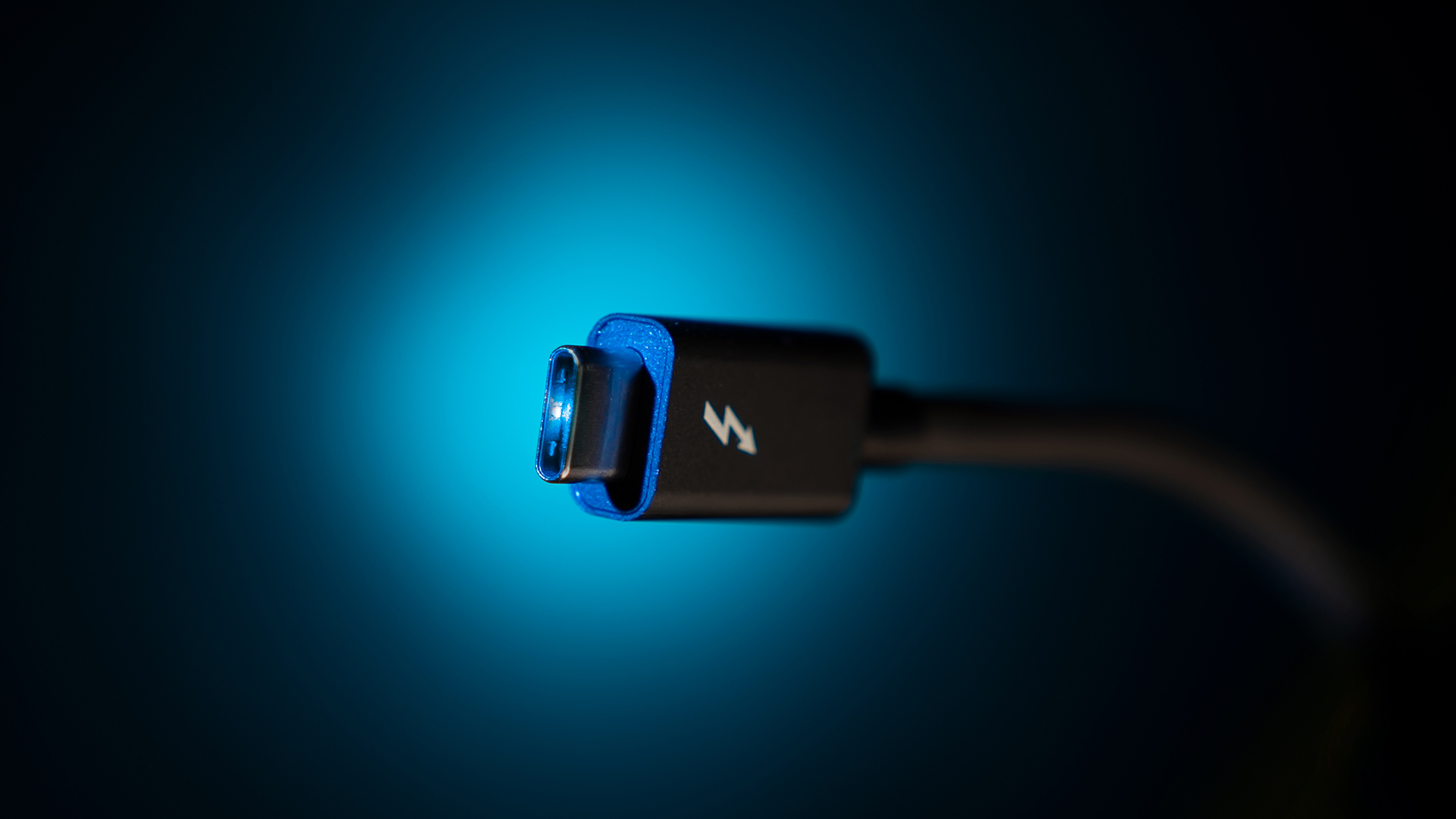USB 4 Version 2.0 Announced With 80 Gbps of Bandwidth

The USB Promoter Group has announced USB 4 version 2.0 with some massive upgrades over the original standard. The biggest feature version 2.0 provides is a doubling of available bandwidth from 40 Gbps to a whopping 80 Gbps.
This massive jump makes USB 4 Version 2.0 one of the highest performing connectivity standards on the market. With speeds exceeding all current USB Thunderbolt standards, including Thunderbolt 4 which is limited to 40 Gbps – like USB4.
Version 2.0's shockingly fast speeds are attributed to a new physical layer architecture that has been added to USB4. As a result, version 2.0 uses the existing 40 Gbps passive cables built into USB4 Type-C and adds newly-defined 80Gbps USB Type-C active cables to reach that 80 Gbps mark.
The new USB4 version also adds new updates to its display functionality. Including a bandwidth boost beyond 20Gbps for USB 3.2 data tunneling when using alt modes such as DisplayPort mode. USB4 Version 2.0 has also been updated to feature the latest versions of the DisplayPort standard and PCIe spec.
Of course, like with all previous USB versions, USB 4 Version 2.0 will be backwards compatible with previous revisions, including the original USB4 standard, USB 3.2, USB 2.0 and Thunderbolt 3.
The USB group says Version 2.0 was created specifically to benefit users running a number of different devices through a single USB port, including docks, high-performance displays and more. This makes a lot of sense, as version 2.0's 80Gbps of bandwidth is incredibly overkill for the vast majority of the population.
But for power users who regularly power their laptops off of a massive setup incorporating multiple DisplayPort monitors, USB drives, ethernet and more, the 80 Gbps of bandwidth will come in handy and ensure there are no bandwidth limitations between any of these devices, and the host system.
Get Tom's Hardware's best news and in-depth reviews, straight to your inbox.

Aaron Klotz is a contributing writer for Tom’s Hardware, covering news related to computer hardware such as CPUs, and graphics cards.
-
Indianajonze Reply
I'd just like to know where USB 4 version 1 came from. Every motherboard made today tops out at 3.2 version 2Aaron44126 said:...Really. They couldn't just call this USB 5? -
domih The official logo will be labelled: USB 16^1/2 Gen (2x3-4) x (2x4-6) 0.8x100 Gbps (Error Margin: ~North Pole Temperature x Lincoln Monument seat leg length / 3.14)Reply -
kal326 I think someone that use to work at Capcom got in at the USB Promoter Group. I’m still waiting for “Super USB 3.2 Gen 2 Turbo Ultra Remix” in 2025.Reply -
Inthrutheoutdoor Replykal326 said:I’m still waiting for “Super USB 3.2 Gen 2 Turbo Ultra Remix” in 2025.
Nope thats coming out next month, so you might as well wait for the SupaDupa MegaMax Quadruple oversampling Hexagonal isolinear chip-powered petagigaplexed version, which is due out in mid 2023-ish....hehehehehe :eek: -
Eximo ReplyIndianajonze said:I'd just like to know where USB 4 version 1 came from. Every motherboard made today tops out at 3.2 version 2
X670 / X670E support USB 4.
Intel boards tend to go with Thunderbolt 4, which is inclusive of USB 4's capabilities and a little bit better in every way. -
gamr Reply
whats the difference between thunderbolt and regular usb?Eximo said:X670 / X670E support USB 4.
Intel boards tend to go with Thunderbolt 4, which is inclusive of USB 4's capabilities and a little bit better in every way. -
domih Replykal326 said:I think someone that use to work at Capcom got in at the USB Promoter Group. I’m still waiting for “Super USB 3.2 Gen 2 Turbo Ultra Remix” in 2025.
An alternative is to replace SuperSpeed, with UltraSpeed < HyperSpeed < UberSpeed < LudicrousSpeed for the incremental higher speeds above 5 Gbps.
But I admit that "Turbo Ultra Remix" is a pretty good one :-) -
Eximo Replygamr said:whats the difference between thunderbolt and regular usb?
Plenty of info about that out there, same for USB 3 and Thunderbolt 3.
But the basics would be that Thunderbolt 4 and USB 4 both support 40 Gbps, but thunderbolt certification comes with a minimum speed of 32Gbps whereas you label something USB 4 as long as it meets the standard, could be even be as low as 20Gbps. Also a slight difference in power requirements, with thunderbolt devices supporting 15W vs 7.5W of USB4. Thunderbolt supports better daisy chaining of displays. Probably more stuff, but suffice to say that it doesn't matter to most end users. -
psycher1 Imagine a future with no HDMI or DP cables. Only USB connections to monitors. I like it, sounds clean.Reply
I'd still rather imagine VR workspaces, where you just pull up and move apps and documents around with your hands in a virtual space. But cleaner workspaces on traditional monitors are nice too.